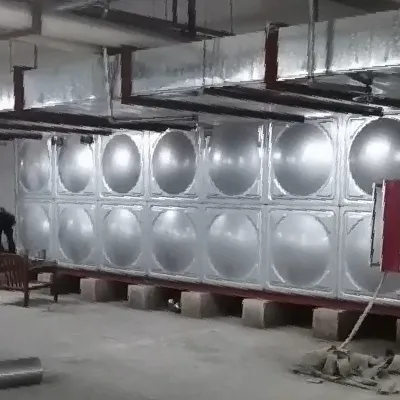loading...
- No. 9, Xingyuan South Street, Dongwaihuan Road, Zaoqiang County, Hengshui, Hebei, China
- admin@zjcomposites.com
- +86 15097380338
- Welcome to visit our website!
Exploring the Benefits and Applications of GFRP Rods in Modern Engineering
The Rise of GFRP Rods Revolutionizing Construction and Engineering
In recent years, the construction and engineering industries have witnessed a remarkable shift towards innovative materials that offer enhanced durability, lightweight properties, and resistance to environmental degradation. One such material that has gained significant traction is Glass Fiber Reinforced Polymer (GFRP) rods. These composite materials are transforming traditional methodologies, presenting numerous advantages over conventional steel reinforcement. This article explores the characteristics, benefits, and applications of GFRP rods, illustrating their pivotal role in modern construction.
What are GFRP Rods?
GFRP rods are composite materials made from a polymer matrix reinforced with glass fibers. This combination results in a high-strength, lightweight rod that boasts exceptional resistance to corrosion and environmental factors. Unlike traditional steel reinforcement bars, GFRP rods are not susceptible to rust, making them particularly suitable for use in harsh environments.
The manufacturing process of GFRP rods involves the careful alignment of glass fibers within a resin matrix, providing the material with remarkable tensile strength and flexibility. The rods can be produced in varying diameters and lengths, allowing for customization to meet specific engineering requirements.
Advantages of GFRP Rods
1. Corrosion Resistance One of the most significant advantages of GFRP rods is their resistance to corrosion. Unlike steel, which can rust when exposed to moisture and certain chemicals, GFRP remains unaffected by such environmental conditions. This property not only extends the lifespan of structures but also reduces long-term maintenance costs.
2. Lightweight Composition GFRP rods are considerably lighter than their steel counterparts, which facilitates easier handling and transportation on construction sites. The reduced weight also contributes to overall lower foundation loads, which can be particularly beneficial in seismic zones or on unstable ground.
3. High Strength-to-Weight Ratio GFRP rods possess a high strength-to-weight ratio, making them ideal for applications that require significant load-bearing capacity without adding excessive weight. This attribute allows engineers to design more efficient structures while maintaining safety standards.
4. Non-Magnetic and Non-Conductive GFRP materials are non-magnetic and non-conductive, which makes them suitable for applications in environments where electromagnetic interference is a concern. This characteristic is particularly advantageous for structures such as bridges or tunnels near sensitive electronic equipment.
gfrp rod

5. Temperature Resistance GFRP rods can withstand a broad range of temperatures without compromising their structural integrity, making them suitable for various climates and conditions. This thermal stability enhances the versatility of GFRP in different applications.
Applications of GFRP Rods
The versatility of GFRP rods allows for their application in a variety of construction projects, including
- Reinforcement in Concrete Structures GFRP rods are increasingly being used as reinforcement in concrete structures, including bridges, parking garages, and building foundations. Their corrosion resistance makes them particularly suitable for use in environments with high salt exposure, such as coastal areas.
- Tension Members in Bridges In modern bridge construction, GFRP rods are utilized as tension members. Their lightweight nature reduces the overall weight of the bridge, which can lead to savings in structural materials and construction costs.
- Ground Anchor Systems GFRP rods are used in ground anchor systems to secure retaining walls and slopes. Their resistance to corrosion ensures that they remain effective over extended periods, even in challenging soil conditions.
- Aerospace and Marine Applications Beyond construction, GFRP rods find applications in aerospace and marine industries due to their lightweight and corrosion-resistant properties. They are used in structural components where minimizing weight is crucial for performance.
Conclusion
The adoption of GFRP rods in construction and engineering marks a significant advancement in the pursuit of durability, efficiency, and sustainability. With their unique properties and wide-ranging applications, GFRP rods are not merely an alternative to traditional materials but a transformative solution that aligns with the modern demands of the construction industry. As innovation continues to drive the evolution of building materials, GFRP rods are poised to play a key role in the future of engineering, setting new standards for quality and performance.
-
The Rise of FRP Profiles: Strong, Lightweight, and Built to LastNewsJul.14,2025
-
SMC Panel Tanks: A Modern Water Storage Solution for All EnvironmentsNewsJul.14,2025
-
GRP Grating: A Modern Solution for Safe and Durable Access SystemsNewsJul.14,2025
-
Galvanized Steel Water Tanks: Durable, Reliable, and Ready for UseNewsJul.14,2025
-
FRP Mini Mesh Grating: The Safer, Smarter Flooring SolutionNewsJul.14,2025
-
Exploring FRP Vessels: Durable Solutions for Modern Fluid HandlingNewsJul.14,2025
-
GRP Structures: The Future of Lightweight, High-Performance EngineeringNewsJun.20,2025
